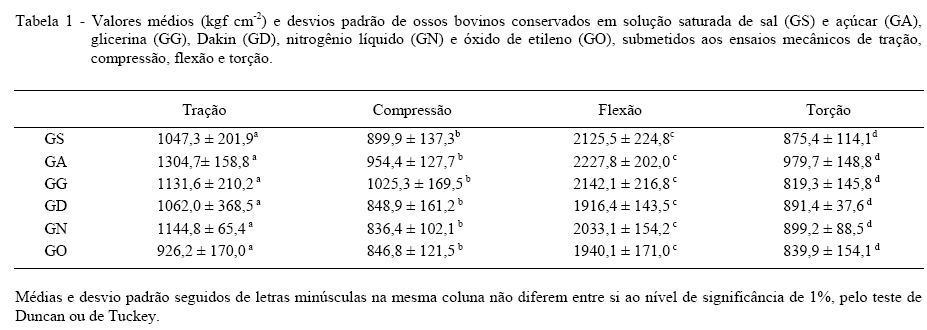The objective of this study was to evaluate the mechanical strength of bone plates yielded from bovine cortical bone, conserved in different solutions, and the efficiency of these solutions in the inhibition of microorganism's growth. A hundred and sixty eight plates yielded from bovine tibiae were conserved in 98% glycerin, 150% saline solution, 300% sugar solution, Dakin solution, frozen in N2L at - 196°C, or sterilized in ethylene oxide gas. After rehydration in NaCl 0.9% solution for six hours, plates were subjected to tensile, compression, bending and twisting testing. The microbiological evaluation of bone plates was s carried out before and immediately after rehydration, with or without enrofloxacin 0.5% addition. There was no significant difference (P<0.01%) on resistance to the rupture point in plates conserved in different solutions, frozen-thawed or sterilized. Microorganisms were isolated from plates conserved in satured salt solution, sugar satured solution, Dakin solution or frozen in N2L, before and after rehydraion However, after the use of NaCl 0.9% solution added of enrofloxacin 0.5%, microorganisms were not isolated. Therefore, bovine bone plates conserved in sugar or salt satured solution, 98% glycerin, Dakin solution, frozen in N2L or sterilized in ethylene oxide gas present similar biomechanical tests results, and rehydrated with a solution of NaCl 0.9% plus enrofloxacin 0.5% is effective on microorganism growth control.
implants; grafts; biomaterials; conservation solutions; mechanical testing




